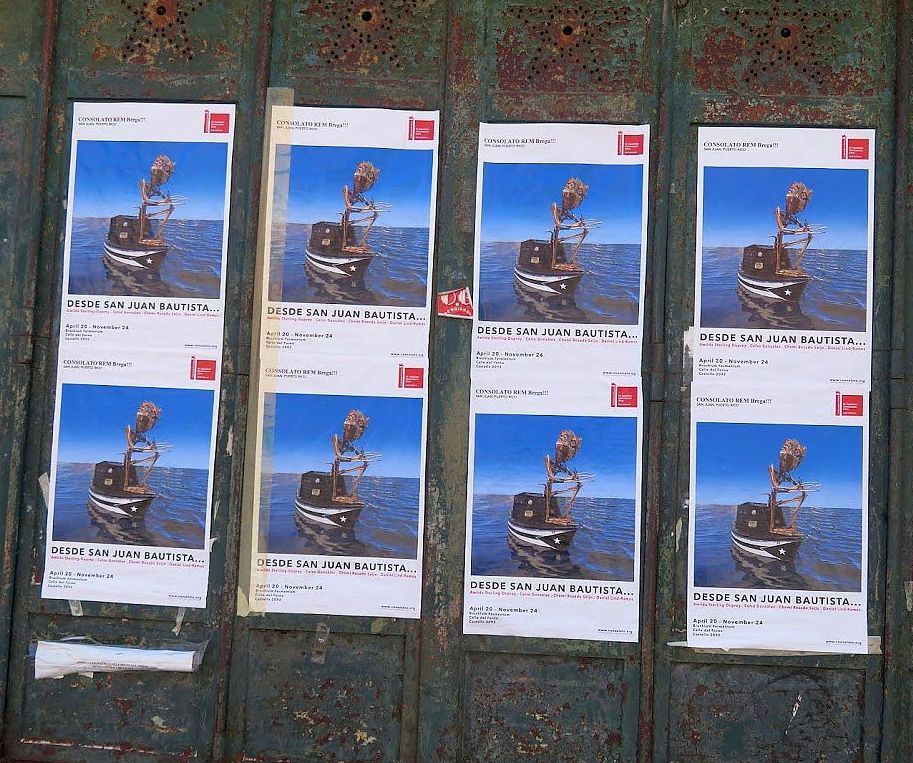
The Biennale has opened several weeks earlier than usual this year, and the inauguration was Saturday, April 20. What remained usual, however, was the mass of international art(s) journalists and assorted contributors that swarmed the streets of Castello for the three preceding days.
I usually enjoy seeing the exotic plumage of these migrating creatures, not to mention their extraordinary behavior, but this year netted little. A good friend told me he saw a person in the street wearing a toilet on his head and I’m really sorry I missed that. Lino’s father-in-law was a plumbing contractor and was occasionally seen around town carrying a toilet on his shoulder — clearly he didn’t realize the artistic potential in his humdrum little existence and its porcelain trappings. I suspect that supporting four children during a world war might have limited his frivolous side, if he had one.
But such a jape would only have appeared frivolous back then, when life was real and life was earnest. Whoever porta’d that potty the other day was doing it seriously. To what end, I can’t say, but everything at the Biennale is done with a degree of seriousness denser than black granite. Along with the art we get diatribes and philippics and harangues, and also sermons and lectures and platitudes. Lots of words that labor to obscure rather than illuminate. Speaking of art — I mean, words — I’m remembering this self-portrait by Salvator Rosa (1645):

Back to the bony statue on the boat. It has been moored alongside the fruit and vegetable boat at the bottom of via Garibaldi. It will be there till the Biennale closes in November.
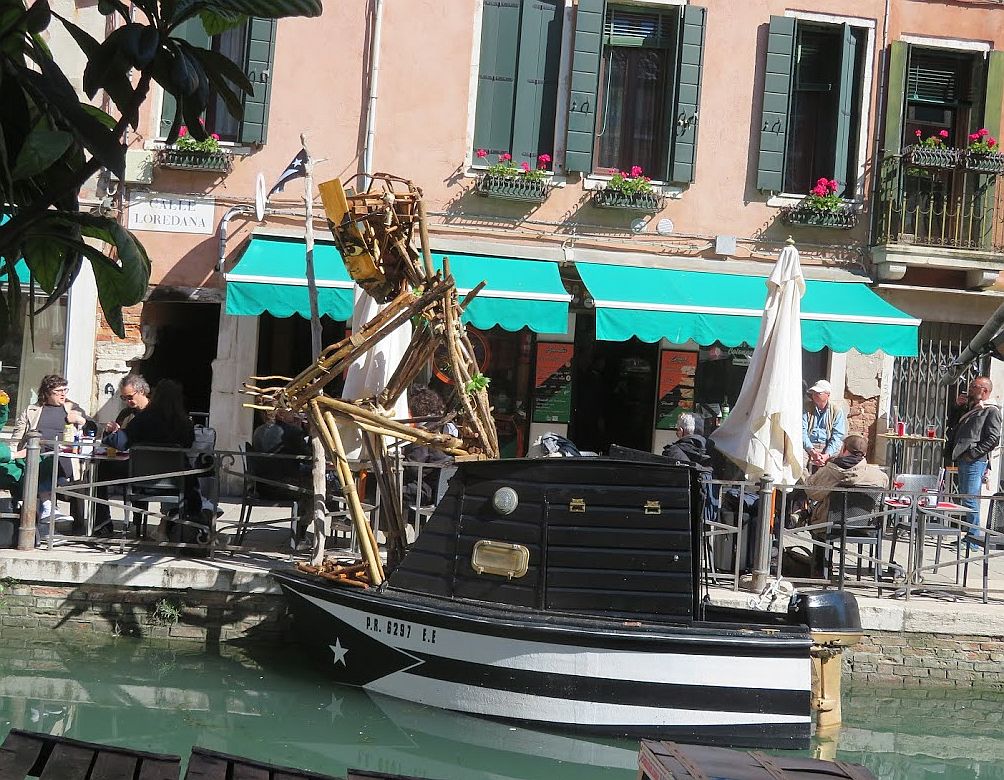
But if you desire meaning, maybe the following will help:
At the heart of the exhibition stands Celso González’ monumental Yola Sculpture, “San Juan Bautista,” a powerful symbol of Puerto Rico’s enduring spirit. This site-specific installation challenges the constraints of its political status, whil honoring the Island’s rich maritime heritage.
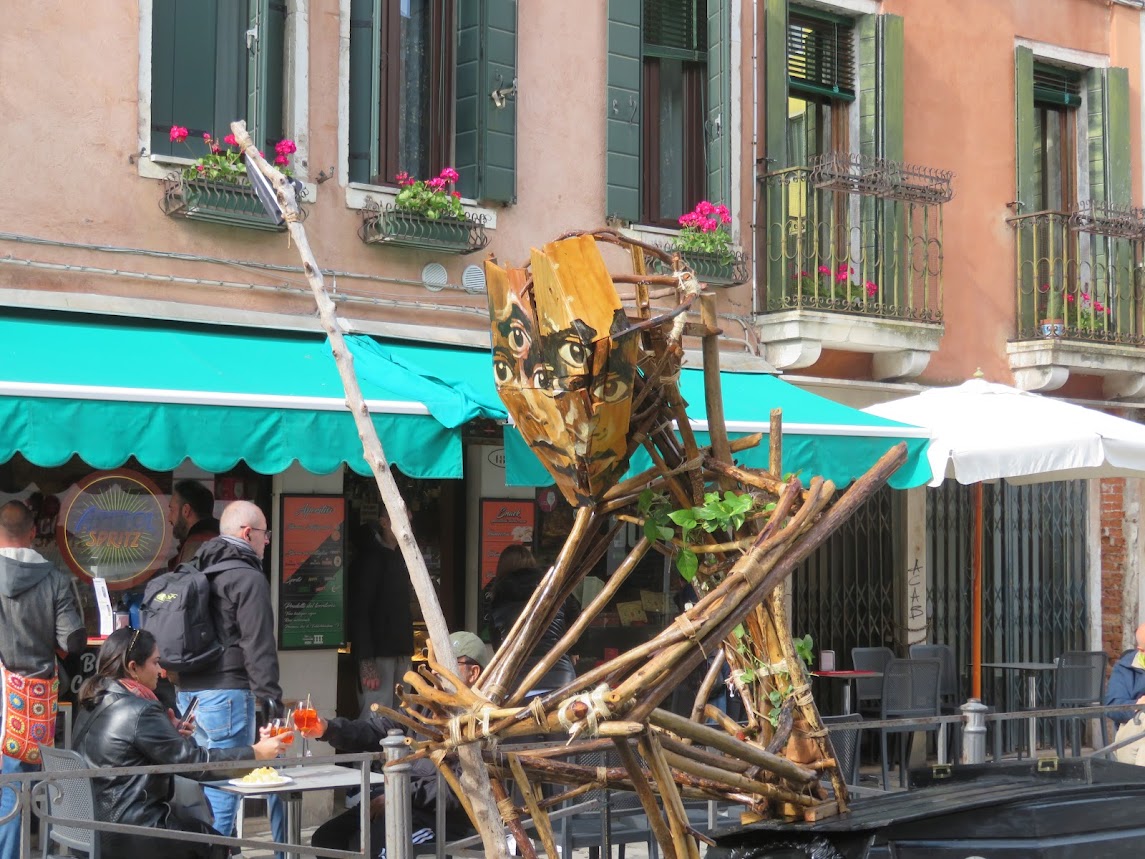
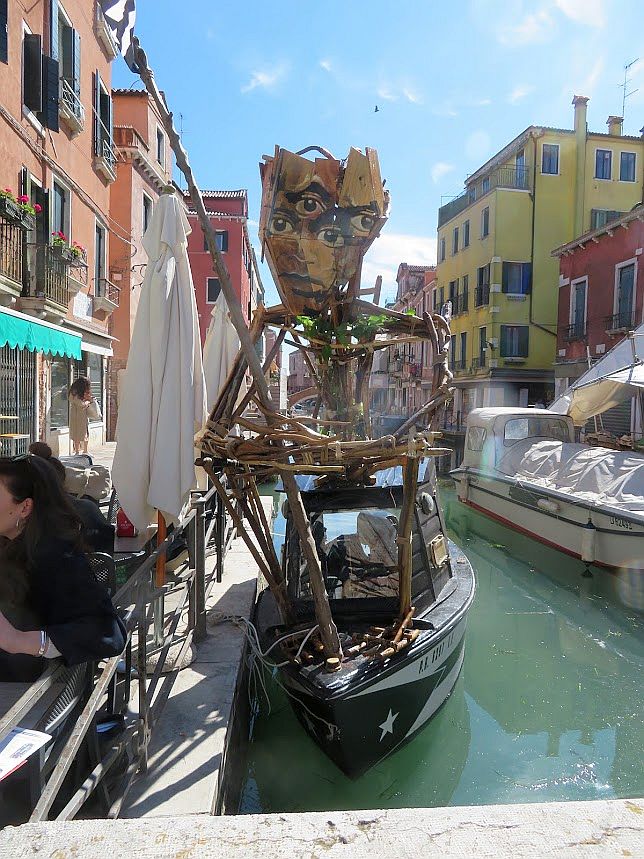
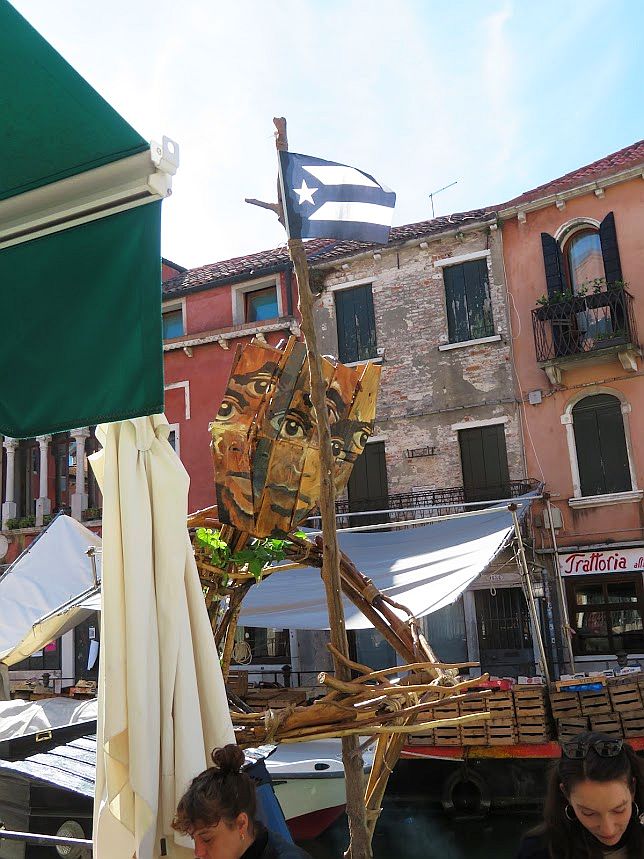

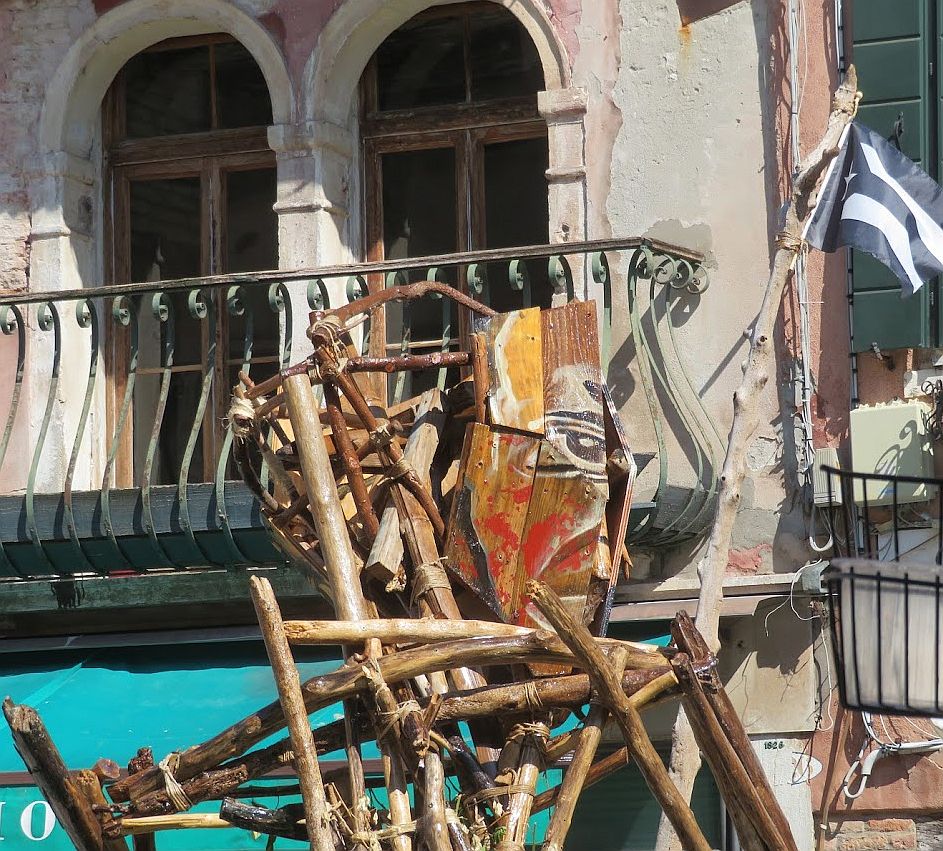
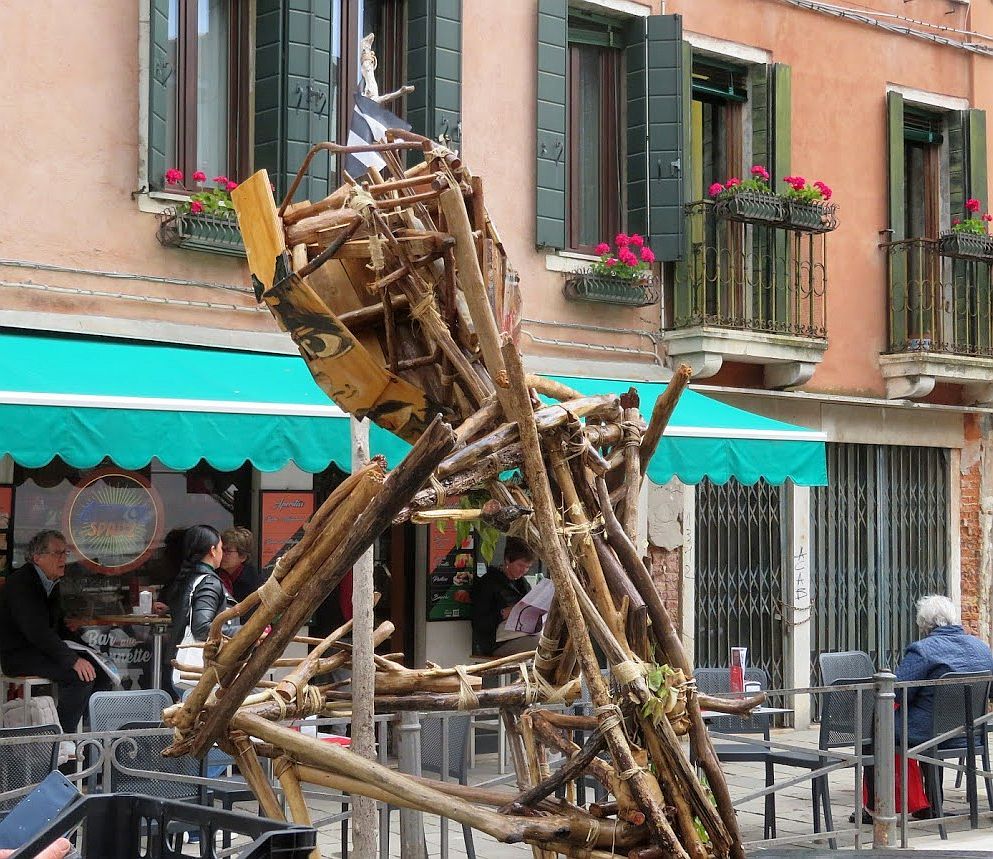

There have been boats at the Biennale before now. The water is evidently an element that helps some projects seem more interesting. Or important.
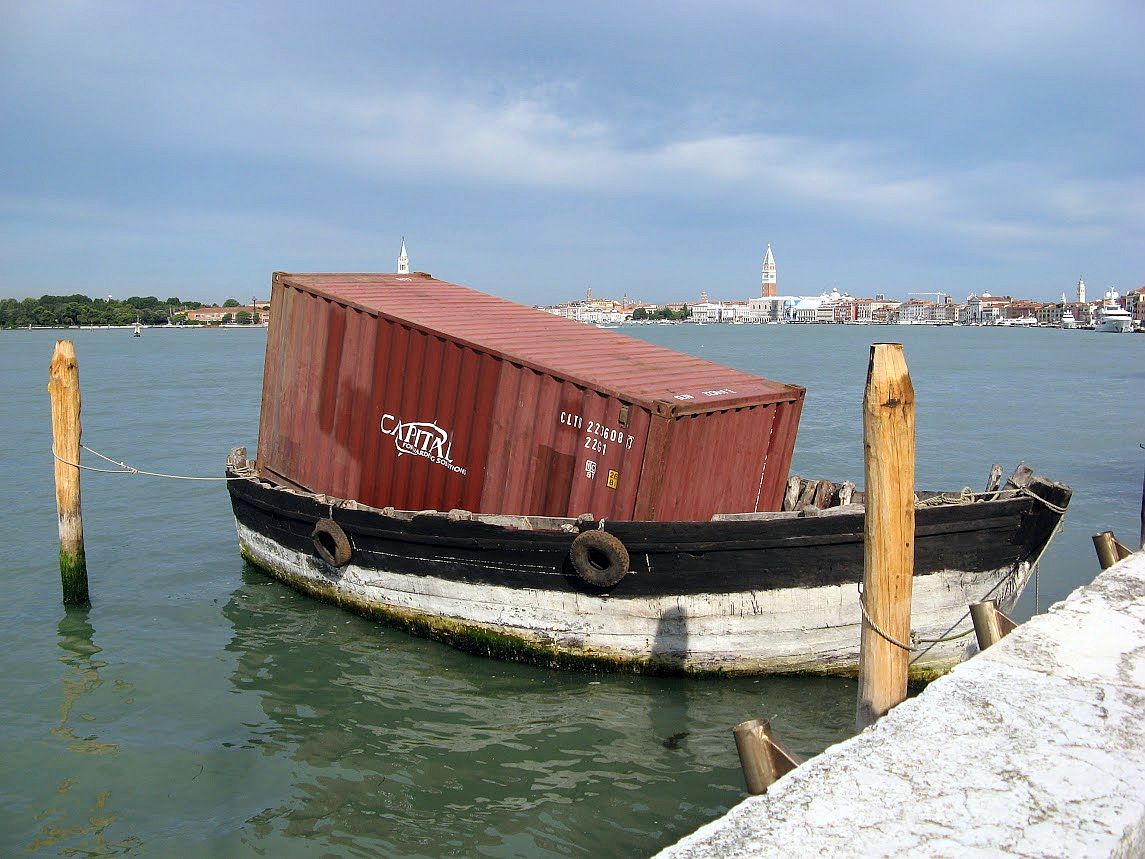
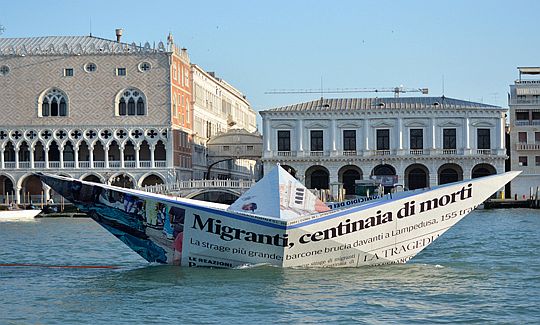
Vik Muniz’s floating installation Lampedusa was launched during the 56th Venice Biennale in 2015. The article published in the Haifa Museum of Art publication stated that “the 14-meter-long (45 feet) paper boat was coated with a giant reproduction of the Italian newspaper that reported the tragedy. The gargantuan paper boat drifted along the Canal Grande, Venice’s main transportation route, docking near luxury yachts. As art critic Jonathan Jones wrote in The Guardian, “This art project has been overtaken by real-life horror. Perhaps, in theory, it seemed reasonable to make a vaguely thought-provoking, ‘playful’ piece about migration. But now the scale of our cruelty, the true consequences of all the rhetoric that dehumanises migrants, have become so lethally clear. Surely, art on such a theme should be less equivocal, more angry.”
Well said, Mr. Jones. But this is the Biennale, where scruples find little nourishment.
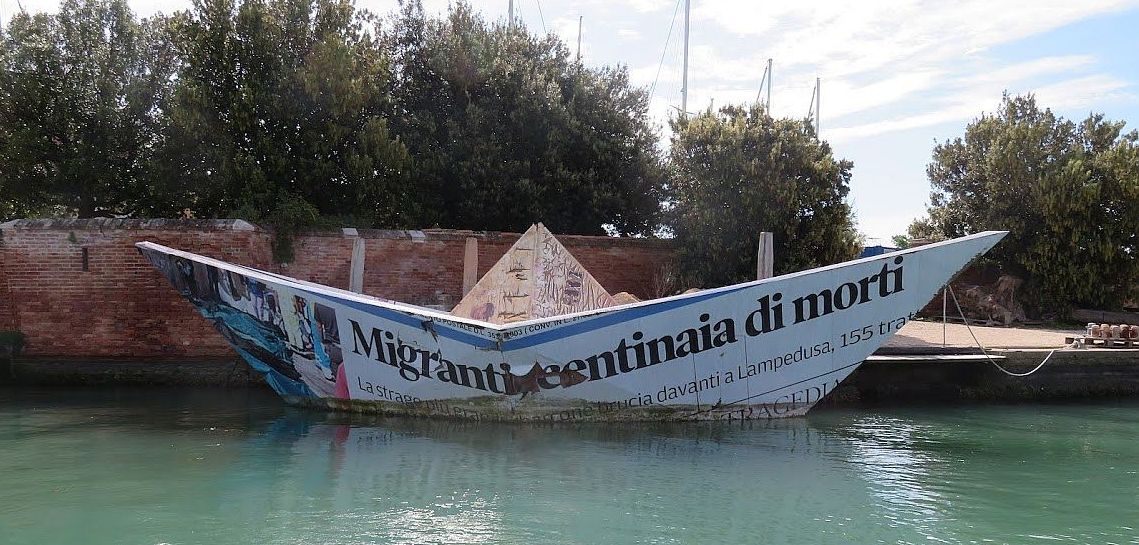

I’m going to go back to floating St. John. Despite not being any closer to resolving urgent questions of urban injustice or the coloniality of power, I’m starting to feel that we understand each other.


9 Comments
Hilarious interpretations! Bienale artists seem to do things that are so obscure, I usually can’t find an entry point
The ‘explanation’ of the Puerto Rican exhibit would be a top candidate in ‘Pseud’s Corner’ of Private Eye magazine.
I recommend you pass it along to them. Why not?
I empathise with the guy waiting for the n°13 to Sant’Erasmo… if he’s at Fondamente Nove, I suggest he goes into Caffégelato and has a spritz or indeed a gelato… (and there’s a loo for clients too)…. Years ago when we were new in Venice, I saw a man running madly for a vaporetto. The elder Venetian man watching alongside me, glanced at me and at the man and sighed, “What’s he running for? There will be another one…”. A lesson as venetian-zen as one could get…
Well yes, seeking shelter/refreshment at Caffegelato is a wonderful idea. Only thing is, he just missed the next-to-last #13 vaporetto, which leaves the Fondamente Nove at 21:40 (9:40 PM). The Caffegelato closes at 21:30 (9:30 PM). So, as so often happens here, wonderful ideas run headfirst into reality. So he’s doomed to wait until 22:40 (10:40 PM), an hour, as noted. I’m glad you didn’t ask me why he’s waiting for the vaporetto when he’s sitting on a boat, but if you insist on rationality, he’s stuck because his little boat is missing fuel, spark plugs, and a driver. And I don’t know why he has to go to Sant’ Erasmo.
As for your Venetian zen-master, I can only hope that was back in the days when there was more than one vaporetto an hour. An hour break just dislocates half of an entire day.
Well, I’m looking forward to meeting him in October.
Thanks!
‘A system for knowing which contact lens goes in which eye’, absolutely hilarious. Thank you Erla, made my day! 🤣🤣🤣
The floating St John is lovely and your comment about which contact lens goes in which eye totally cracked me up too. A spark of hope that not all artists are totally bonkers. I really liked the Salvator Rosa quote too. I’ll be annoying colleagues with it shortly. 🙂 Too bad that so many more or less dubious pieces of art are just left behind, discarded by the artists who made them.
I really hope that I will have the time to drop by again this summer to see it all but the plans are still uncertain.
Asa most of the exhibits I’ve seen in past Biennales have left me completely cold, this is a delightful change, and I really like your comments – as always.
Ella B